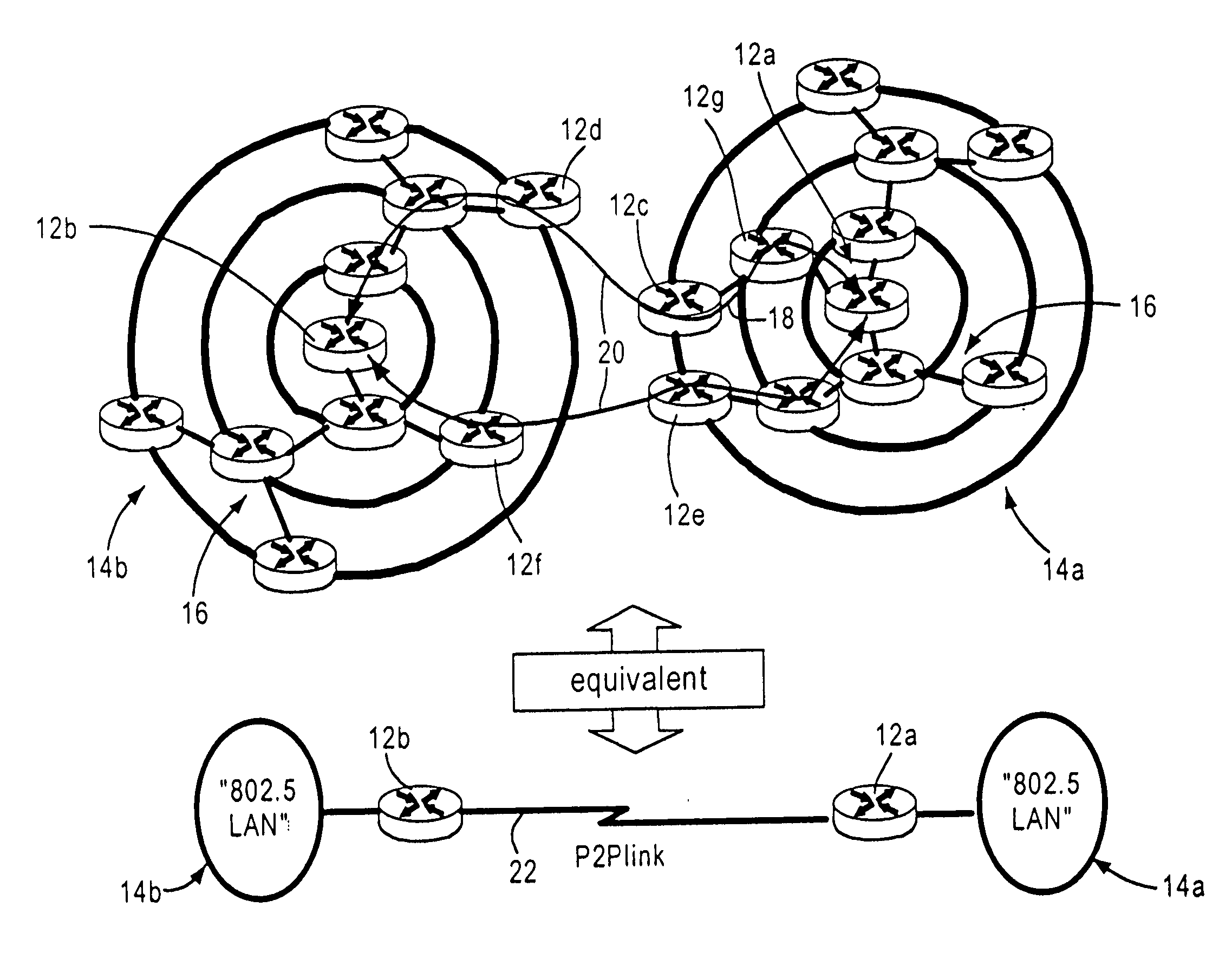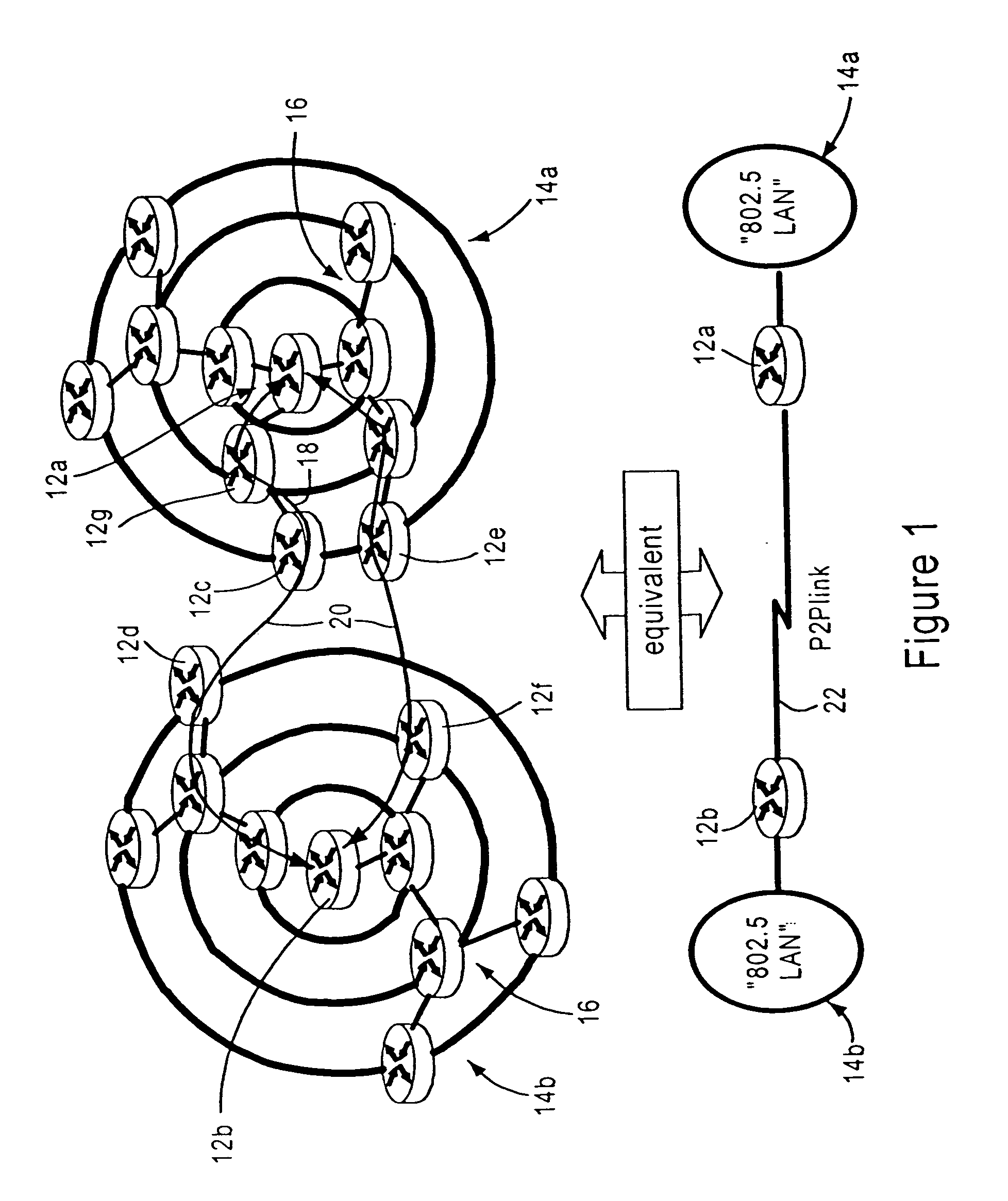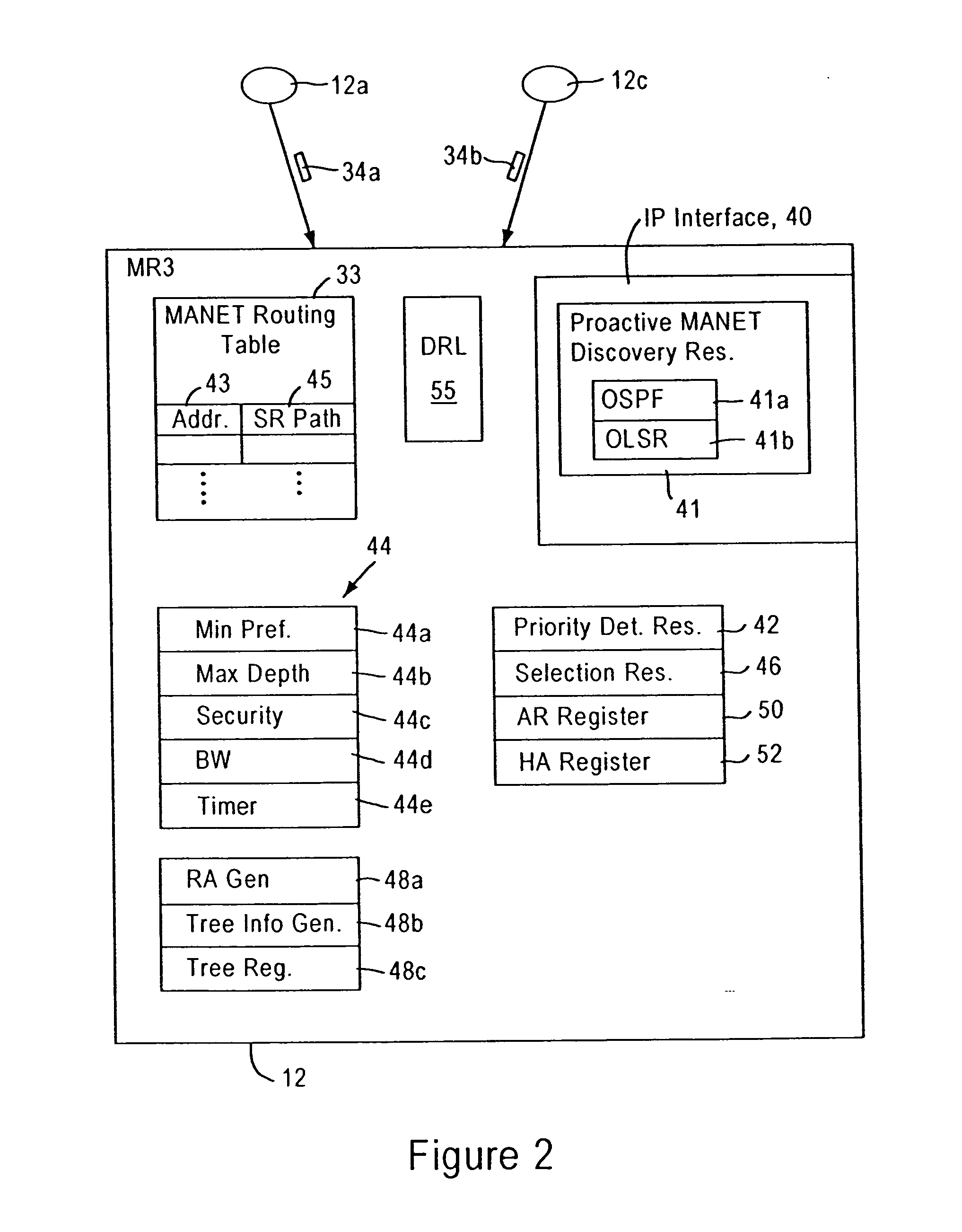Arrangement for router attachments between roaming mobile routers in a clustered network
a mobile router and router attachment technology, applied in the field of establishment and management of mobile networks by mobile routers, can solve the problems of poor model for connecting to a wide area network such as the internet, the wireless topology of the network may change rapidly and unpredictably, and the difficulty of modeling and quantifying wireless propagation characteristics and signal quality between a wireless transmission source and a receiver, so as to achieve optimal communication performance
- Summary
- Abstract
- Description
- Claims
- Application Information
AI Technical Summary
Benefits of technology
Problems solved by technology
Method used
Image
Examples
Embodiment Construction
[0028]FIG. 1 is a diagram illustrating a connection methodology of mobile routers 12 within clustered networks 14a and 14b, according to an embodiment of the present invention. The disclosed embodiment is directed to an arrangement for a mobile router 12 to attach to another router 12 in a cluster, for example as within a mobile ad hoc network (MANET) (e.g., 14a) in order to establish an optimized communication within the clustered network. In particular, the routers 12 in a cluster (e.g., 14a) normally create routes based on the total possible meshing at a given point in time. The disclosed embodiment dynamically assembles the layer 2 clusters into a tree-based topology model 16 in order to optimize mobile IP operations. In particular, disclosed embodiment utilizes the attachment techniques described in commonly-assigned, copending application Ser. No. 10 / 218,515, filed Aug. 15, 2002, entitled “ARRANGEMENT FOR OPTIMIZING CONNECTIONS BETWEEN ROAMING MOBLE ROUTERS IN A MOBLE NETWORK”...
PUM
 Login to View More
Login to View More Abstract
Description
Claims
Application Information
 Login to View More
Login to View More - R&D
- Intellectual Property
- Life Sciences
- Materials
- Tech Scout
- Unparalleled Data Quality
- Higher Quality Content
- 60% Fewer Hallucinations
Browse by: Latest US Patents, China's latest patents, Technical Efficacy Thesaurus, Application Domain, Technology Topic, Popular Technical Reports.
© 2025 PatSnap. All rights reserved.Legal|Privacy policy|Modern Slavery Act Transparency Statement|Sitemap|About US| Contact US: help@patsnap.com



